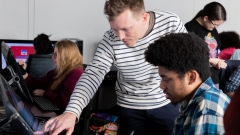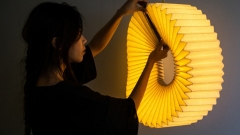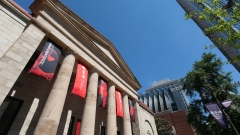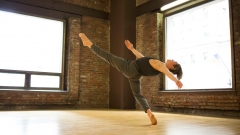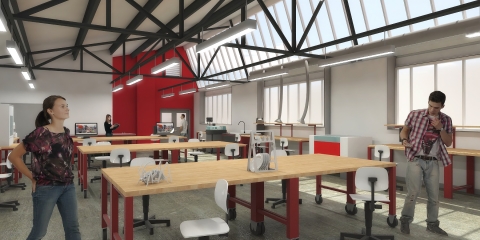UArts Developing New “Makerspace” for Students Across All Programs
July 1, 2018
The University of the Arts is developing a new “Makerspace,” a digital and traditional fabrication studio that will be a major opportunity for the entire UArts community. This centralized facility in the Hamilton/Furness Hall complex at 320 South Broad Street will act as a magnet to bring together the entire university community, and serve as a catalyst for collaboration, experimentation and innovation.
The Makerspace will be a place of innovation for all UArts students, housing state-of-the-art digital and analog equipment that will allow students to create virtually anything they can imagine. It is designed to foster collaboration between departments and schools to help the University of the Arts become the “Place of Choice” for prospective students.
Phase two construction is currently underway and led by the award-winning Philadelphia-based architecture firm, JacobsWyper.
This space will be transdisciplinary in nature, bringing together students, faculty, staff, practitioners and corporations from a wide range of disciplines to collaborate on exciting and innovative projects. This space will be a laboratory that will equip UArts graduates with the skills needed to become future “movers and shakers.”
Importantly, developing the new space will support the growing demand for hands‐on innovation in a new type of knowledge economy. This space will house digital technologies for fabrication such as computer-driven mills, scanners and 3‐D printers.
Another key component will be the social environment of creativity and risk that is created, as well as peer-to-peer learning that the new space will afford. These are critical assets with the global “maker movement” being fueled by the social enterprise of sharing knowledge, expertise and technique through the connectivity of the digital environment.
The Makerspace will become an integral part of the UArts student experience in programs across the University, in visual and performing arts and design. It will complement and expand UArts’ current analog fabrication equipment with improved precision and speed, helping to promote market‐oriented product development and support multidisciplinary teaching, learning, and entrepreneurship to further advance creativity and innovation.

